ZMINA: Rebuilding - The Gothic Garden of the Organ Hall
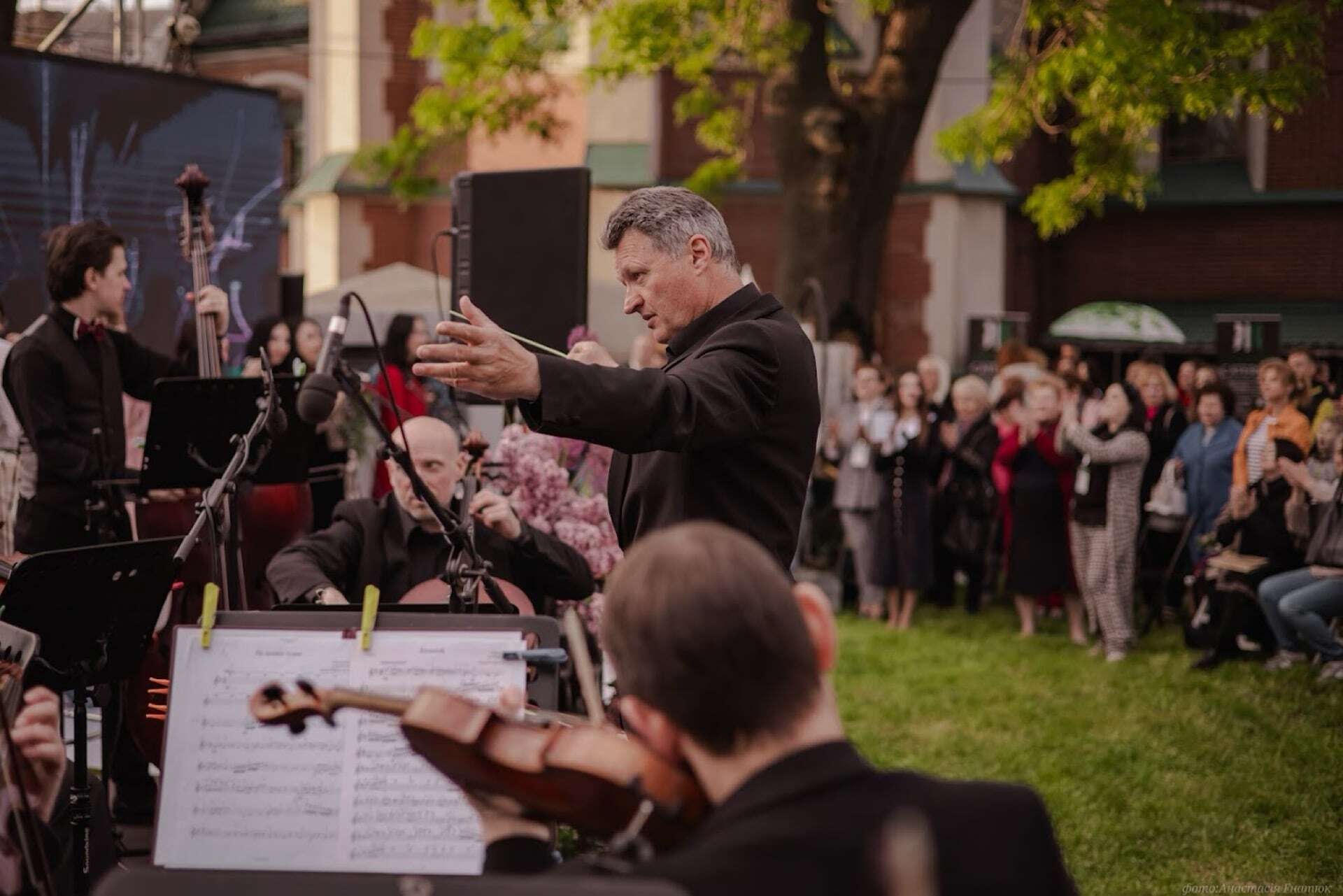
At the end of spring, a new cultural space was born in the heart of Rivne, Ukraine, aiming to beautify the city and strengthen the community during wartime and post-war reconstruction. The Gothic Garden of the Organ Hall project promises to be a place where history, art, and nature coexist, providing residents and visitors with new opportunities for relaxation and cultural enrichment.
The project focuses on restoring the area around the Chamber and Organ Music Hall, known as St. Anthony's Church, built in the 19th century. Last September, the historical monument, the construction of which spanned four decades, celebrated 165 years since its foundation. The church holds significant symbolism—despite suffering damage, it survived two world wars and remained open even during the German occupation until, ironically, the Soviet authorities closed it in 1961, destroying its church features and converting it into a cinema, which proved unpopular with the locals.
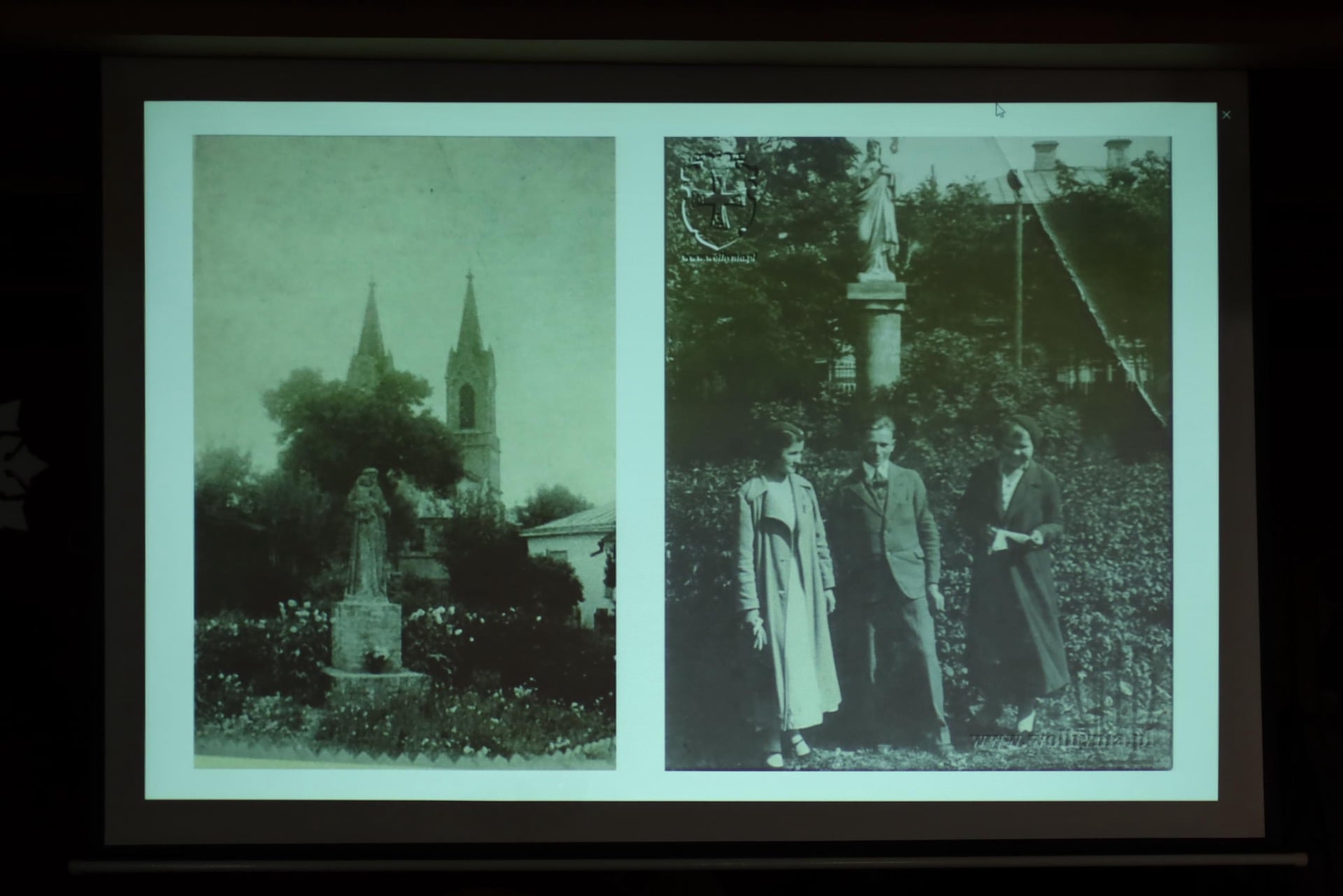 When the church was converted into a cinema, the builders destroyed the front towers and simply covered the structure. Later, when it was decided to use the building as an organ hall, new towers were built on the site of the old ones, but without the spires, distorting the original architecture. In this altered state, the building was registered as an architectural monument. The Rivne Regional Philharmonic's Organ Hall opened here in 1987, but a new organ had to be installed, as the original one had been dismantled when the church was closed in the early 1960s.
When the church was converted into a cinema, the builders destroyed the front towers and simply covered the structure. Later, when it was decided to use the building as an organ hall, new towers were built on the site of the old ones, but without the spires, distorting the original architecture. In this altered state, the building was registered as an architectural monument. The Rivne Regional Philharmonic's Organ Hall opened here in 1987, but a new organ had to be installed, as the original one had been dismantled when the church was closed in the early 1960s.
Today, The Gothic Garden of the Organ Hall project envisions creating an architectural design and landscaping plan for a new cultural space accessible to philharmonic visitors, residents, tourists, and guests of Rivne. “The project’s main goal is resilience during wartime and post-war periods, sustainable development of the concert venue, and effective heritage management,” notes Eleonora Stetsenko, the current director of the Rivne Regional Philharmonic and the project's main visionary.
“We aimed to focus on preserving identities, meanings, and cultural values as a means of post-war reconstruction in Ukraine.”
Eleonora Stetsenko, director of the Rivne Regional Philharmonic
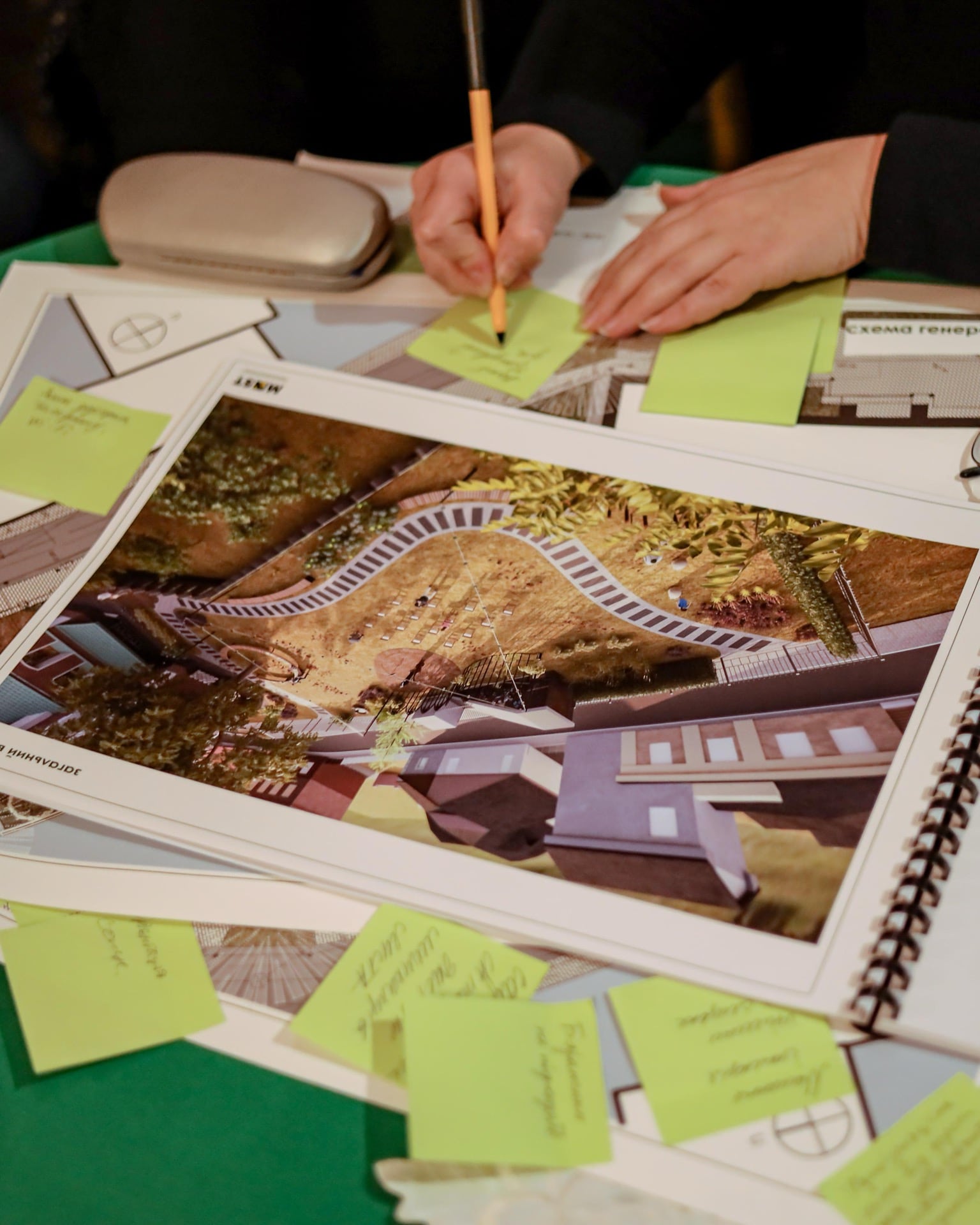
The project is based on methods of public consultation and citizen involvement in addressing local issues, including the joint discussion of the redevelopment and landscaping of the area around the Chamber and Organ Music Hall, which is an architectural and urban planning monument, the main concert venue of the philharmonic, and an attractive tourist site in Rivne. “Without the involvement of concerned citizens, the creation and implementation of the project would have been impossible,” says Eleonora.
At the same time, fear of the community's reaction became one of the main challenges for the project managers. “As you understand, the last two years have been the most difficult. We needed to dispel all myths and assure people that this project has value not only for the Rivne Regional Philharmonic but for all of us, every resident and guest of our town,” the creators noted.
The team working on the project includes the entire staff of the philharmonic. The project began with the idea of creating a new cultural and ecological urban space. Iryna Tomkovych, the concert director and chief manager and organizer, explains: “We divided responsibilities and areas of accountability to meet European standards in all aspects, from reporting to event organization and feedback analysis. This allowed us to focus on the main goal, which was creating a unique space for the community.”
Given that the project's relevance lies in drawing attention to preserving Rivne's identity and its unjustly forgotten local history, thus unveiling the pages of the European cultural heritage of the community, the team aimed to engage and unite pro-active city residents and creative sector professionals, including urbanists, architects, landscapers, historians, local historians, artists, and ecologists. These individuals and the community discussed resilience issues during the war and post-war recovery and urban space reinterpretation.
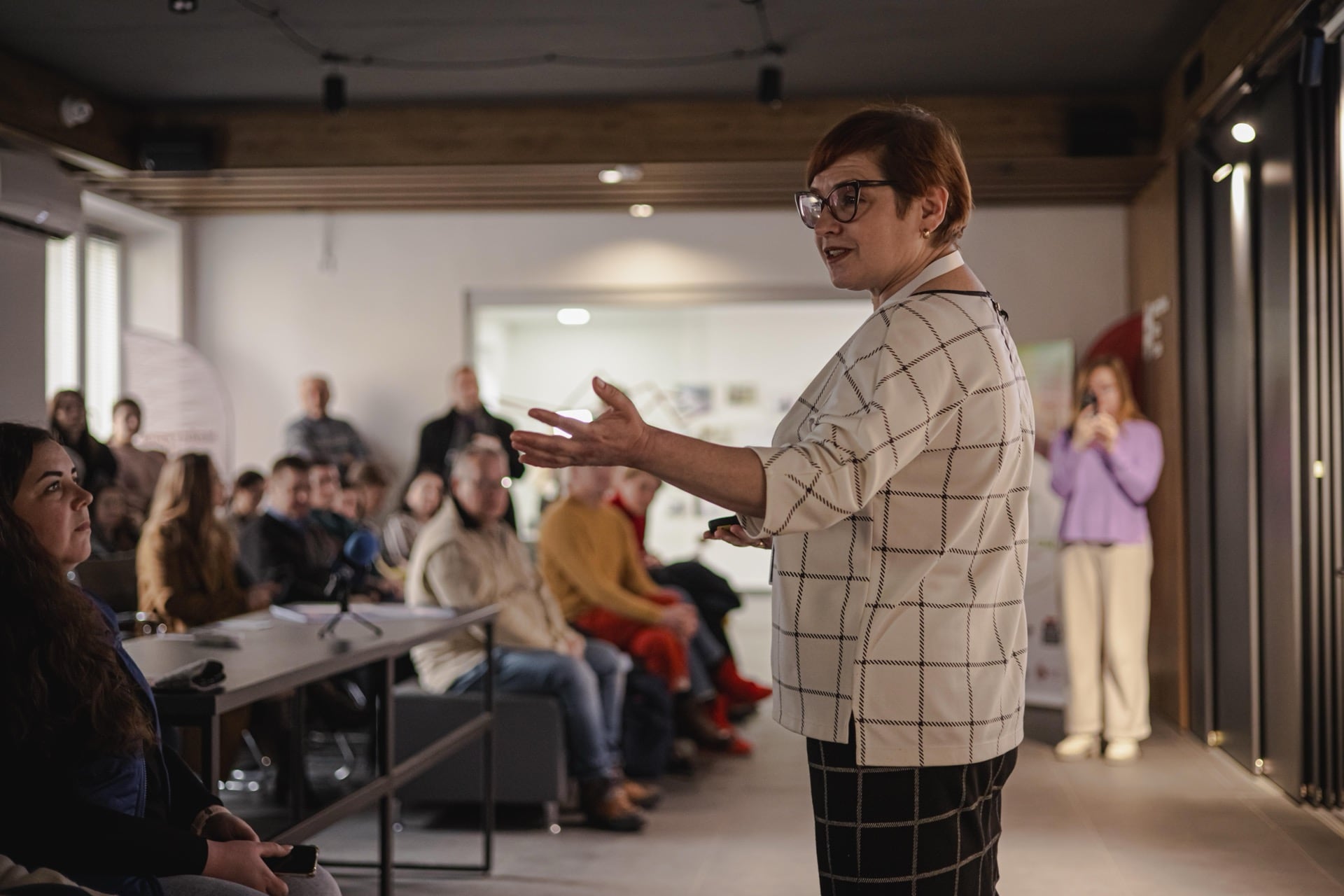 “We created theme-based pages on social networks and reached out to philharmonic partners, media representatives, and public organizations. Several events were held, including The Urban Intensive, a public presentation of the project, an environmental action to tidy up the area, and an open-air concert,” says Ruslana Shaliha, the creative leader and event organizer.
“We created theme-based pages on social networks and reached out to philharmonic partners, media representatives, and public organizations. Several events were held, including The Urban Intensive, a public presentation of the project, an environmental action to tidy up the area, and an open-air concert,” says Ruslana Shaliha, the creative leader and event organizer.
The Urban Intensive presentation brought together local cultural figures, architects, ecologists, historians, local historians, artists, educators, students, classical music enthusiasts, and concerned city residents. “Various garden design options were discussed, including an English-style landscape garden, a botanical mini-garden, and an urban space for cultural events,” notes Iryna Tomkovych. The discussions covered several aspects, including the architectural features of the Organ Hall building and its historical past, which the project team cherishes. The area renovation was considered from the local history and cultural heritage perspectives. Barrier-free solutions and inclusion were particularly relevant during the war and will be important in the post-war period. Modern urban trends were also considered, focusing on improving the environment, nature-based solutions for preserving urban biodiversity, and adapting to climate change.
“Through joint research, discussions, and brainstorming, we developed creative solutions for the ecological renovation of the area around the Chamber and Organ Music Hall,” says Iryna Tomkovych. “At The Urban Intensive, everyone had the opportunity to express their thoughts. It was a convenient European format where, after thematic expert presentations, attendees could voice their wishes and comments. The open mic allowed for constructive criticism and discussion, helping us record interesting ideas and add them to the ‘improvement map.’” By registering and surveying participants, the team maintained contact and analyzed effectiveness and feedback. This allowed them to draw conclusions and develop a further communication strategy.
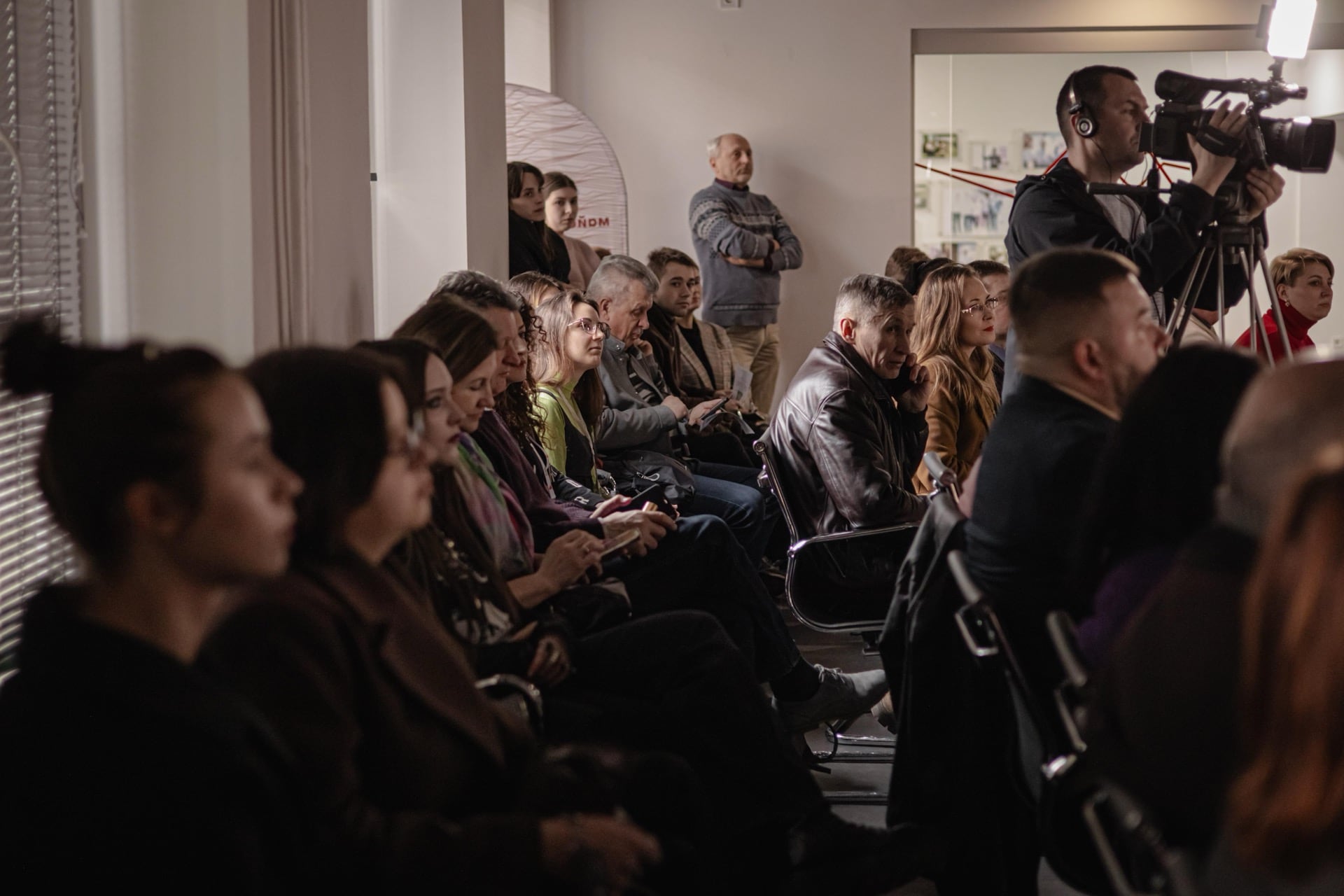
Presenting the concept to the community and experts was the first event of The Gothic Garden of the Organ Hall, where the architectural project and 3D visualization played a key role. To develop the architectural working project, the team turned to specialists from MOST Workshop Ltd. “The MOST Space Organization Workshop is a creative team united by the goal of creating a relevant living environment,” says Yaroslav Nekoz, the studio's architect. “Our vision was to create an ecological, intimate, light-filled, music-infused, inclusive, cozy, and fragrant space.”
The planning considered relaxation, meetings, walks, mini-festivals, open-air concerts, eco-educational space, photo sessions, wedding ceremonies, plein-air painting, mini-exhibitions, fairs, and a Christmas village.
“Back in March, we held a public presentation for the community and the media of the concept of Rivne's new cultural space, The Gothic Garden of the Organ Hall,” notes Olga Shevchuk, architect of the MOST studio. “We presented architectural planning solutions, landscaping, and visualizations that allowed the community to see the project's future.”
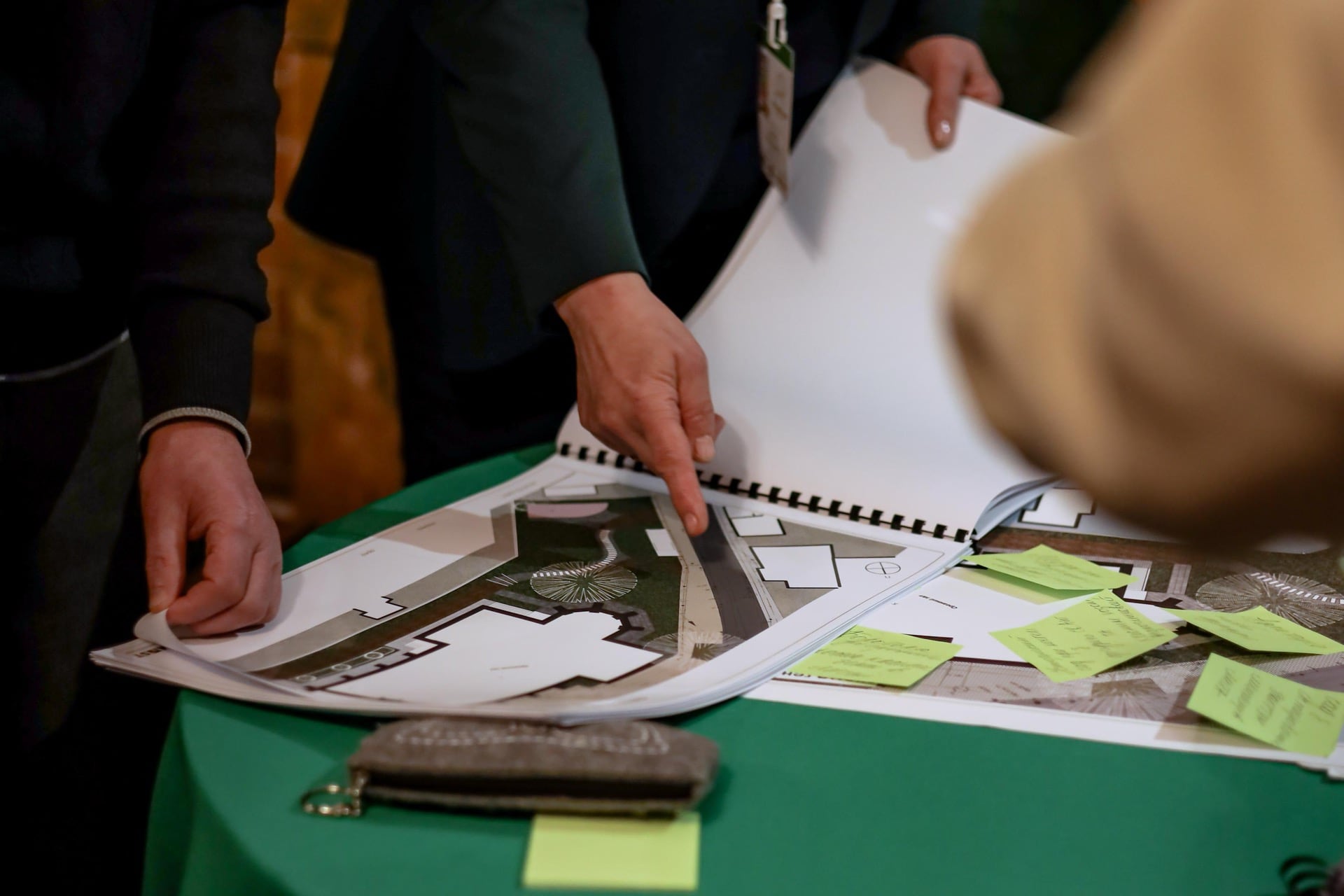
An important part of the project was organizing a cleanup event and ecological action. “We invited the Rivne community to help lay the foundation for the future The Gothic Garden of the Organ Hall,” shares Iryna Tomkovych. “We encouraged everyone to join the ecological cleanup and, if possible, bring plants. Notably, the event took place on April 18, World Heritage Day and the Day of Historical and Cultural Monuments of Ukraine.”
“This time, we moved from theoretical and technical tasks to practical ecological action,” notes Ruslana Shaliha. “Participants cleaned the area, prepared the soil, planted perennials, and called it a day with friendly discussions over tea.”
Representatives of local authorities, community activists, students, and other residents joined the event. “Families even planted together,” adds Ruslana. “Around 70 people participated in the cleanup. The collective effort to green and beautify the Organ Hall area is just the beginning of creating another venue for outdoor cultural events in Rivne.”
The idea resonated with many city residents. Local restaurant owners and other benefactors stepped up to support the initiative and provided funding for essential materials and plants. Iryna Tomkovych mentioned generous contributions, including discounts on plants and donation of seedings, while experts in landscaping offered their technical support for proper planting and soil selection. During the cleanup, a diverse range of trees, shrubs, and climbing plants were planted to give the area a more polished look.
“On April 25, The Gothic Garden collection was enriched with a Kanzan cherry tree, gifted by Yurii Yatsyka, head of the All-Ukrainian Art Vector, vocalist, teacher, and public figure, who is currently defending Ukraine,” emphasizes Iryna. “The blooming tree was donated on his own initiative.” Notably, Yurii also posted on his Facebook page, saying, “A person should plant a tree in their lifetime. Thank you to the Rivne Regional Philharmonic for the opportunity to join the charity event and enhance the aesthetic beauty of our city's environment!”
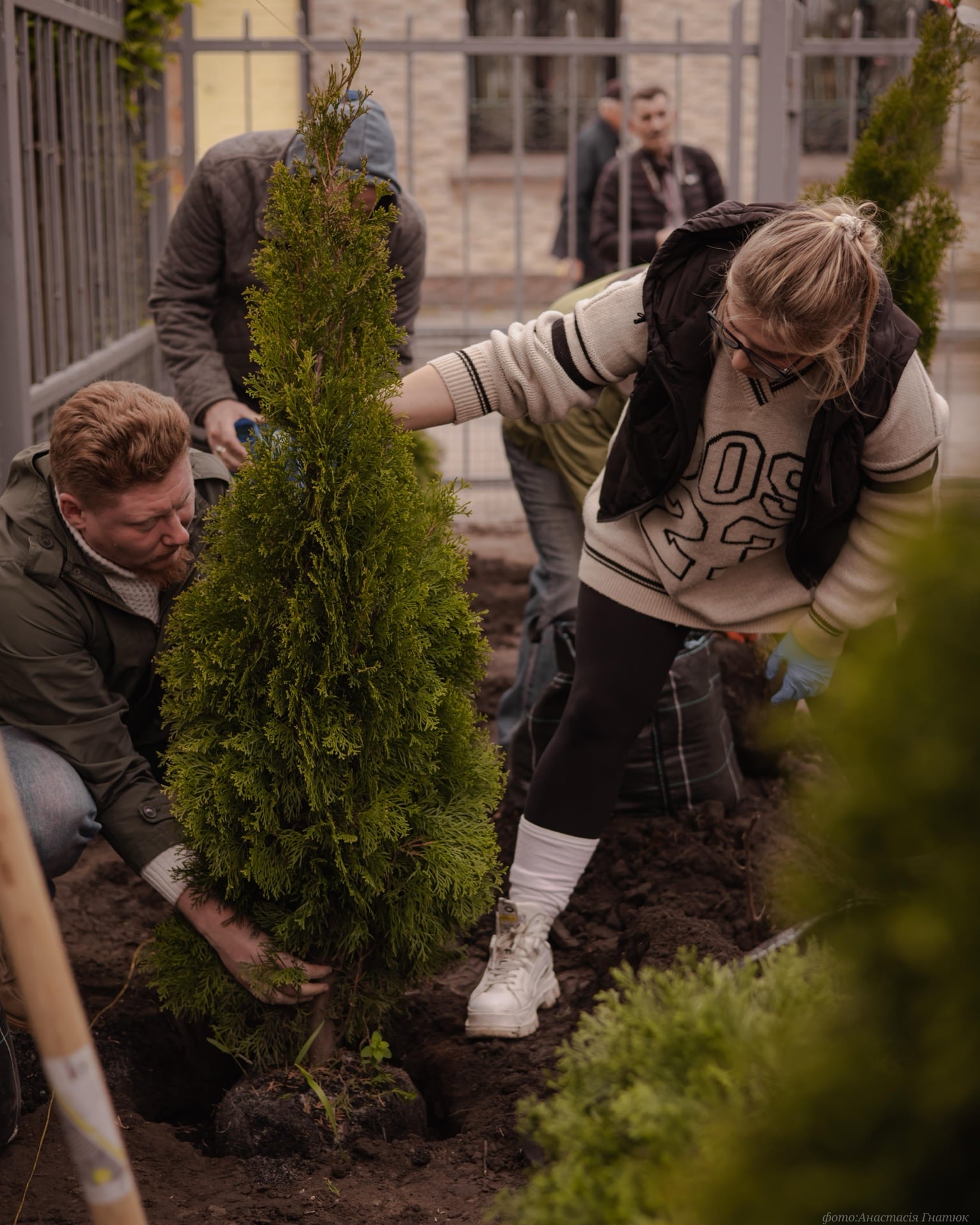
Like every other aspect of Ukrainian life, cultural projects have also been affected by the ongoing Russian invasion. Located far from the main frontlines, Rivne aims to be a reliable rear and a place of comfort for those forced to leave their homes. “Thanks to our soldiers who fight for every meter of Ukrainian land and keep the sky over us clean, we strive to live an active creative life,” says Eleonora Stetsenko. “Many interesting projects and events took place in Rivne this year, which, naturally, unites and strengthens the community, including ours.”
Life is so short, and the war has taught us to value every moment, opportunity, and chance.
Eleonora Stetsenko, director of the Rivne Regional Philharmonic
The project team, experts, and specialists aimed to create the right concept for The Gothic Garden, considering the war and post-war recovery. Special attention was given to inclusivity and accessibility. “For us, it is crucial to be useful and effective, active and decisive. We cannot give up or stop. Life is so short, and the war has taught us to value every moment, opportunity, and chance. When we took on the concept development, the team was aware of the risks. For some people, this idea might seem untimely, as two years of full-scale invasion have heightened societal tensions. Development ideas are met with suspicion, leading to some distrust. It is hard for people to believe that someone still wants to invest their time, efforts, and resources, to nurture rather than dispose, to restore rather than be idle, to unite rather than quarrel. We believed in our project,” shares Eleonora.
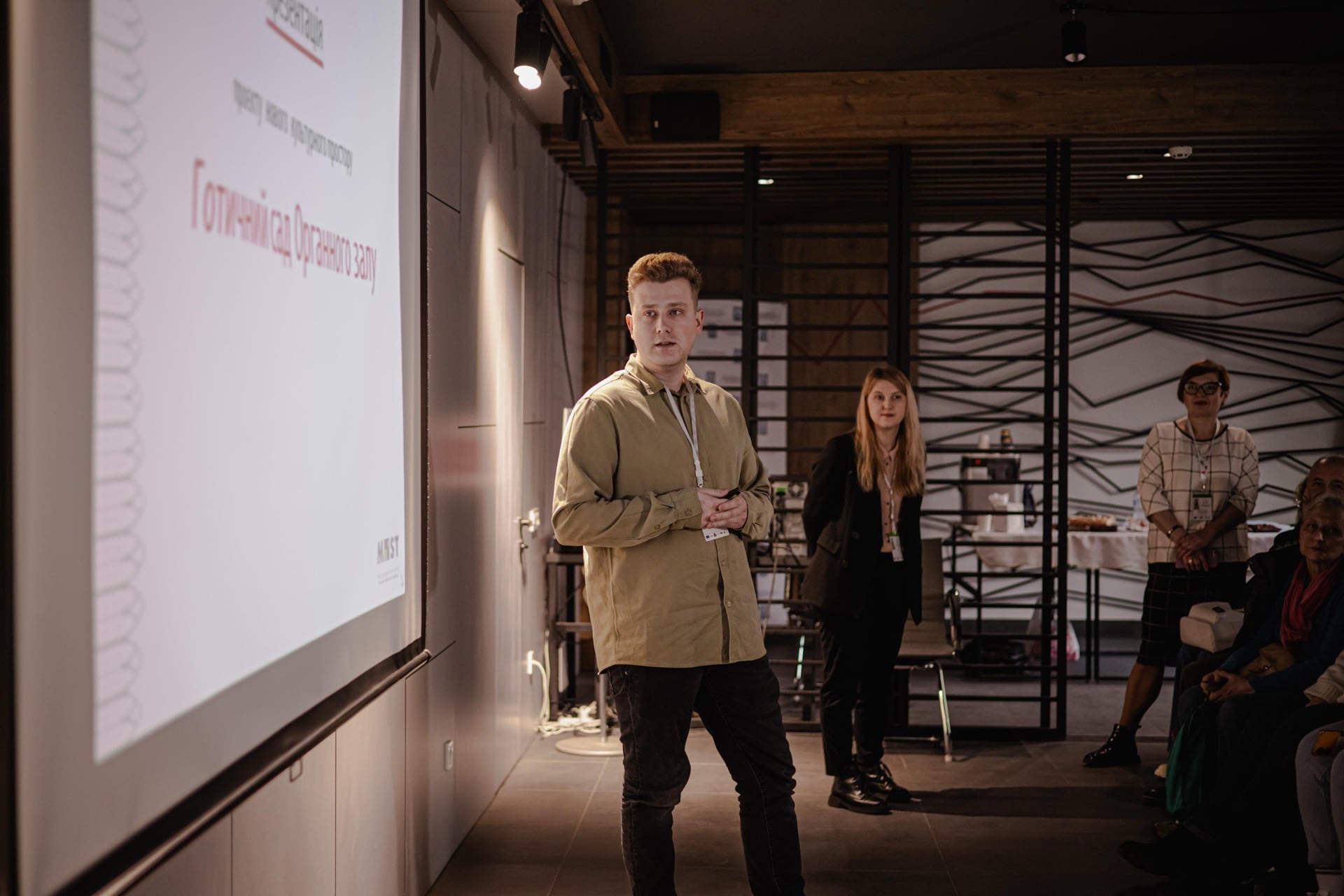
“Regarding safety, we have a reliable shelter on the Organ Hall premises that can accommodate the necessary number of people. We controlled the number of visitors and surveyed each one to keep safety measures under control,” notes Iryna Tomkovych. Surprisingly, none of the events in the project coincided with an air raid alert. However, the team provided instructions on what to do in case of an alert and ensured compliance with all fire and civil safety standards.
The project also has significant sociocultural importance, primarily supporting the community's morale during challenging times. “The Rivne Regional Philharmonic makes every effort to create high-quality cultural and sociocultural products, and our project is no exception,” says Ruslana Shaliha. “Starting with The Urban Intensive and ending with the open-air concert, we raised topics of our history, cultural identity, architecture, traditions, and European development vector.”
Post-war reflection, in particular, is important for society, and The Gothic Garden of the Organ Hall project contributes to these processes. "We believed in our project despite the risks and certain societal prejudices,” says Eleonora Stetsenko.
The final event, an open-air concert titled Music in the Garden: Ukrainian Retro, featured beautiful examples of Ukrainian retro music. The program included Ukrainian hits and melodies, sung for decades as folk songs—treasures by Volodymyr Ivasiuk, Ihor Poklad, Volodymyr Vermenych, Ihor Shamo, Myroslav Skoryk, Platon Maiboroda, and a song by Rivne composer Dmytro Kukharuk, performed by his granddaughter, philharmonic soloist Anna Priadko. “This evening gave attendees unforgettable emotions and a chance to immerse themselves in the world of Ukrainian classics,” shares Iryna Tomkovych.
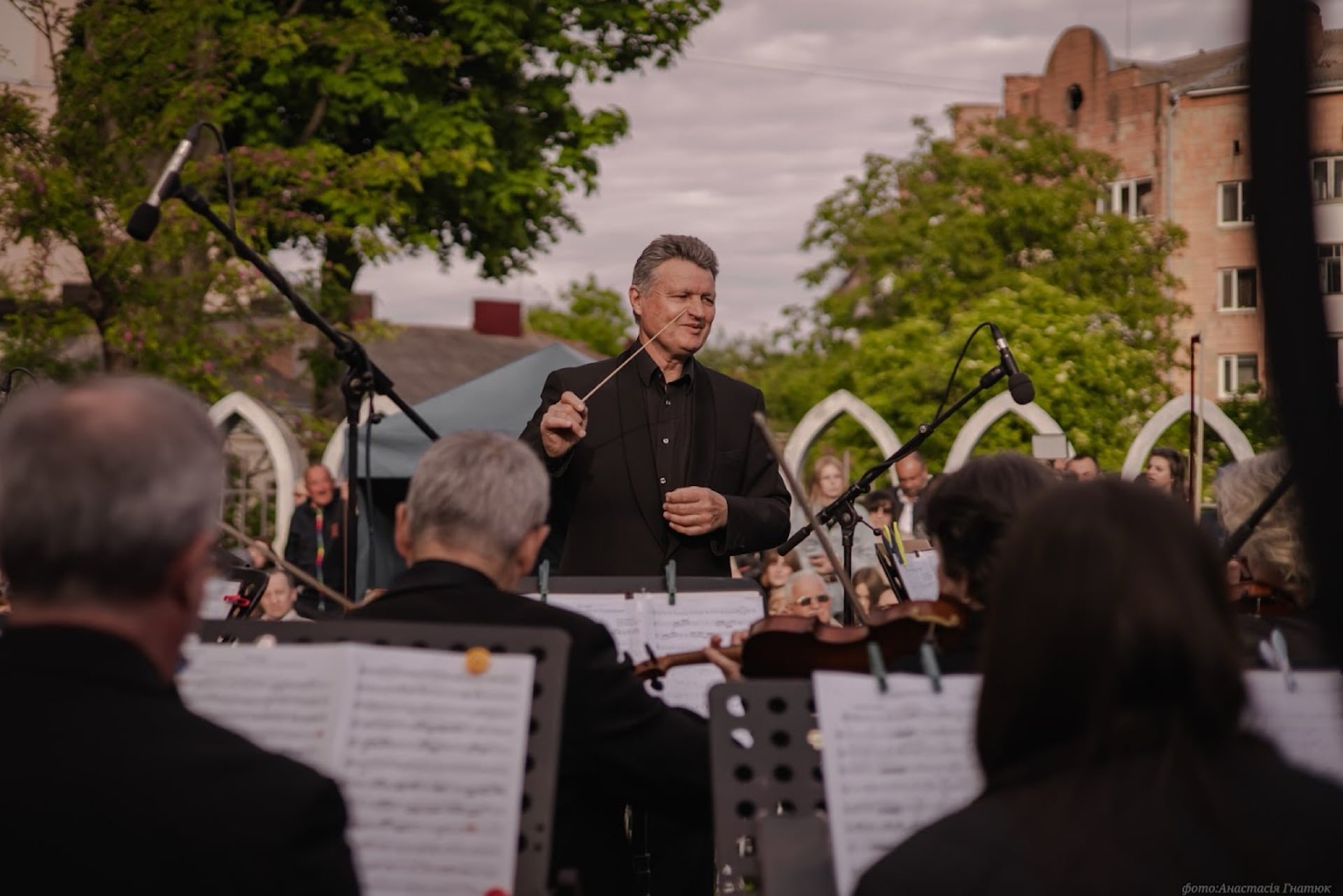
Decorations, stage platforms, LED screens, electric pianos, sound equipment, photo zones, lanterns, and street furniture added atmosphere to the location. Attendees noted that the future The Gothic Garden of the Organ Hall is an amazing location, and the team assured that the philharmonic would attract music enthusiasts in the future, making such gatherings a lasting tradition. “We received numerous messages, mentions, posts, and overwhelming feedback, giving us additional motivation to keep going,” adds Iryna.
The concept of The Gothic Garden has already been created, and now the team is looking for ways to implement the project firmly. “The Gothic Garden will be a beautiful venue for performances and concerts, a cozy place for relaxation and emotional recovery, a favorite spot for people of all ages, a convenient center for people with inclusivity needs, and another tourist attraction on our city's map,” says Ruslana Shaliha. “This is how we see our project in a future without war.”
Funded by the European Union and donors, The Gothic Garden of the Organ Hall project has become a symbol of resilience, unity, and revival for the Rivne community. “The idea of The Gothic Garden of the Organ Hall perfectly reflects the Rivne Cultural Development Strategy, approved this year by the Rivne City Council, supporting several of its visionary directions—reinventing cultural and historical heritage, location renovation, and supporting the dynamic capability of the city's cultural environment,” notes Eleonora Stetsenko.
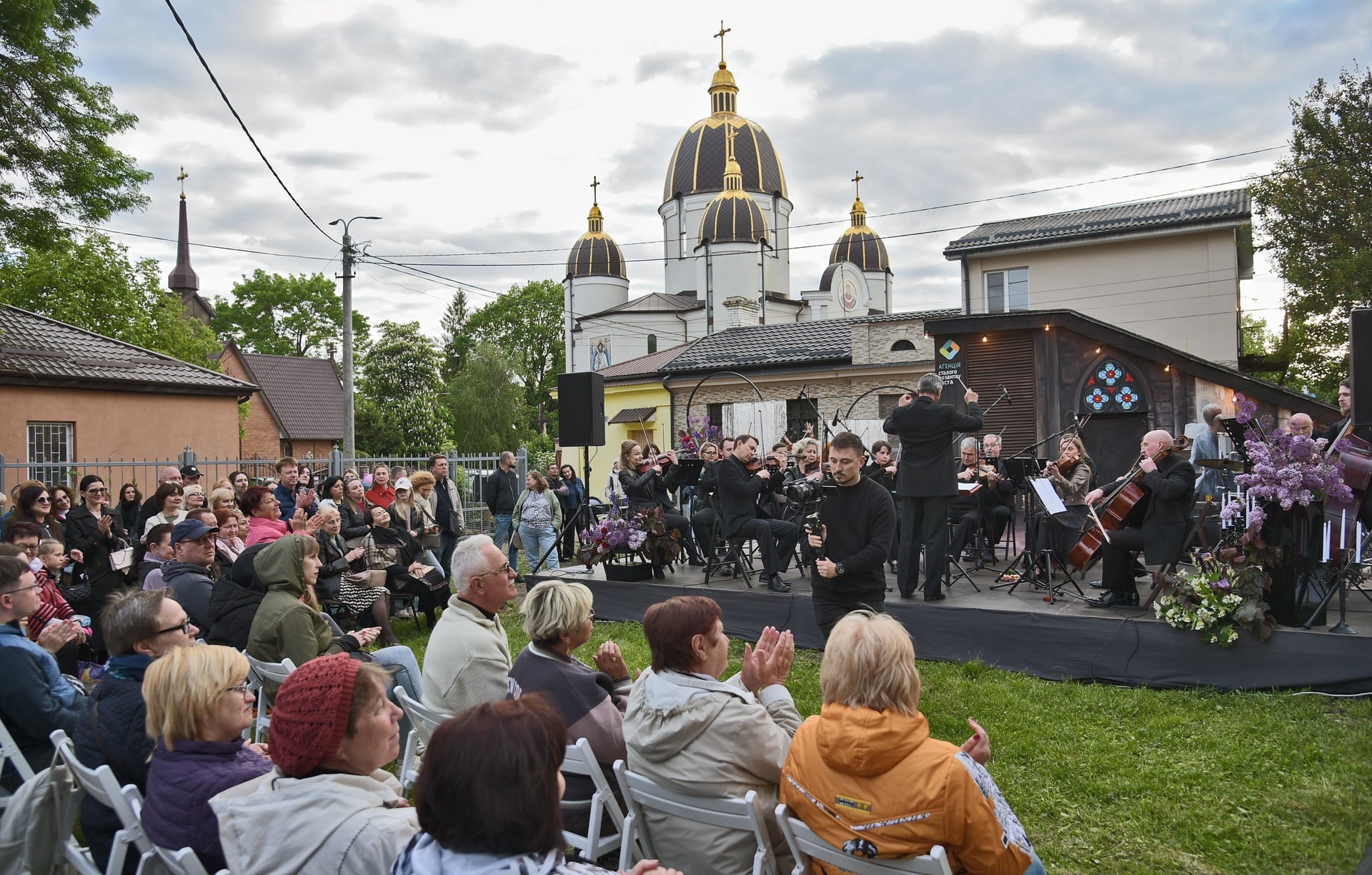
Despite the challenges of the war, the project team has managed to create a space that promises to continue supporting morale, preserving Ukrainian cultural identity, and uniting people, proving that even in the most challenging times, art and culture can be sources of strength and hope.
Author: Mariia Akhromieieva
ZMINA: Rebuilding is a project co-funded by the EU Creative Europe Programme under a dedicated call for proposals to support Ukrainian displaced people and the Ukrainian Cultural and Creative Sectors. The project is a cooperation between IZOLYATSIA (UA), Trans Europe Halles (SE) and Malý Berlín (SK).